Armada Monster Books: A Quick Guide
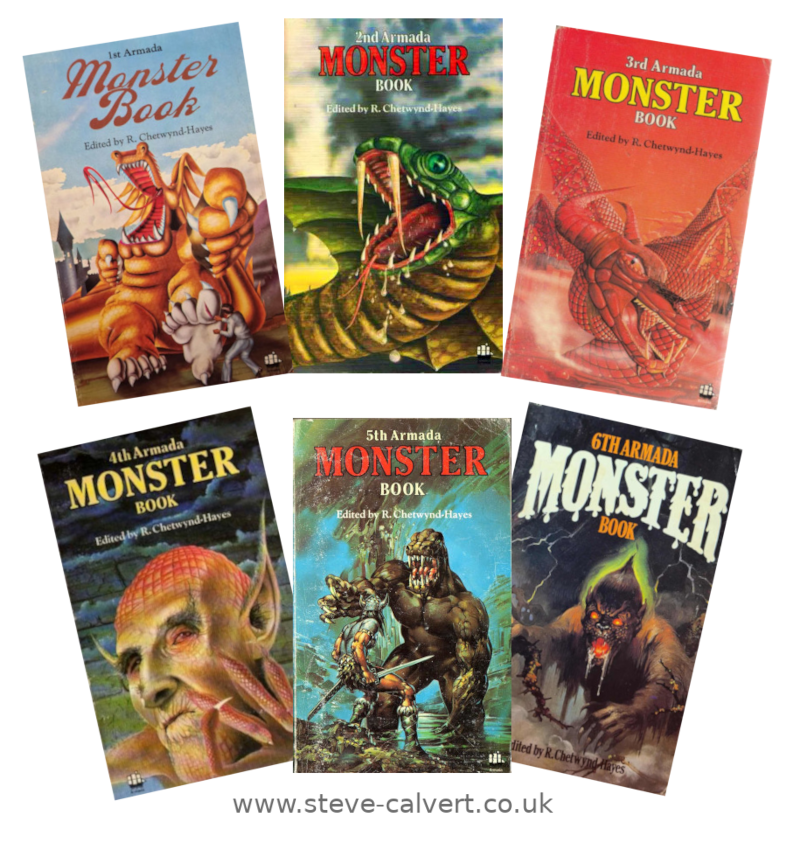 During the 1970s, Armada was one of the most popular children’s book publishers in the UK. In 1975, building on the success of its Armada Ghost Book series, Armada introduced its first book of monster stories. Edited by the noted British horror author R. Chetwynd-Hayes, The 1st Armada Monster Book contained 12 short stories, by a variety of authors including E, Nesbit; Nathaniel Hawthorne; and Rosemary Timperley—a writer who became a regular contributor to Armada’s then ongoing ghost book series, and also contributed to Armada Monster Books 2 and 3.
During the 1970s, Armada was one of the most popular children’s book publishers in the UK. In 1975, building on the success of its Armada Ghost Book series, Armada introduced its first book of monster stories. Edited by the noted British horror author R. Chetwynd-Hayes, The 1st Armada Monster Book contained 12 short stories, by a variety of authors including E, Nesbit; Nathaniel Hawthorne; and Rosemary Timperley—a writer who became a regular contributor to Armada’s then ongoing ghost book series, and also contributed to Armada Monster Books 2 and 3.
In addition to providing an introduction to the book, Chetwynd-Hayes also contributed two original stories: “The Sad Vampire”, which was the first story in the book, and “Big-Feet”, which was the last. Neither story had been published before. It’s not unusual for anthology editors to throw one of their own stories into the mix. Adding a second one is less common, so Chetwynd-Hayes published “The Sad Vampire” under the pseudonym Angus Campbell.
The 2nd Armada Monster Book was published in 1976. Four more followed, with the final one leaving the presses in 1981. R. Chetwynd-Hayes stayed on as editor throughout the entire series, and included his own stories in all but book 3. As with the first book, books 4, 5, and 6 contained 2 of his stories, with one in each book appearing under the pseudonym Angus Campbell. In 2002, the London-based publisher Robert Hale republished all but one of Chetwynd-Hayes’ “monster book” stories posthumously in the anthology Frights and Fancies.
The Armada Monster Book series was short-lived in comparison to Armada Ghost Books—15 of which were published between 1967 and 1983—and it’s notable that Armada continued publishing it ghost books for a further two years after its final Monster Book. This may indicate the series was not as popular with readers. When I was a child, I bought, read, and re-read several Armada Ghost Books, but only bought Armada Monster Books 1 and 3. Many of the monster stories were too humerous or light-hearted for my young tastes. I bought them hoping to enjoy similar chills to those I experienced while reading my ghost books, but they failed to deliver the goods. Perhaps other young readers felt the same, and, like me, were reluctant to buy. If so, this may explain why there were no further Monster Books after book 6.
The 1st Armada Monster Book
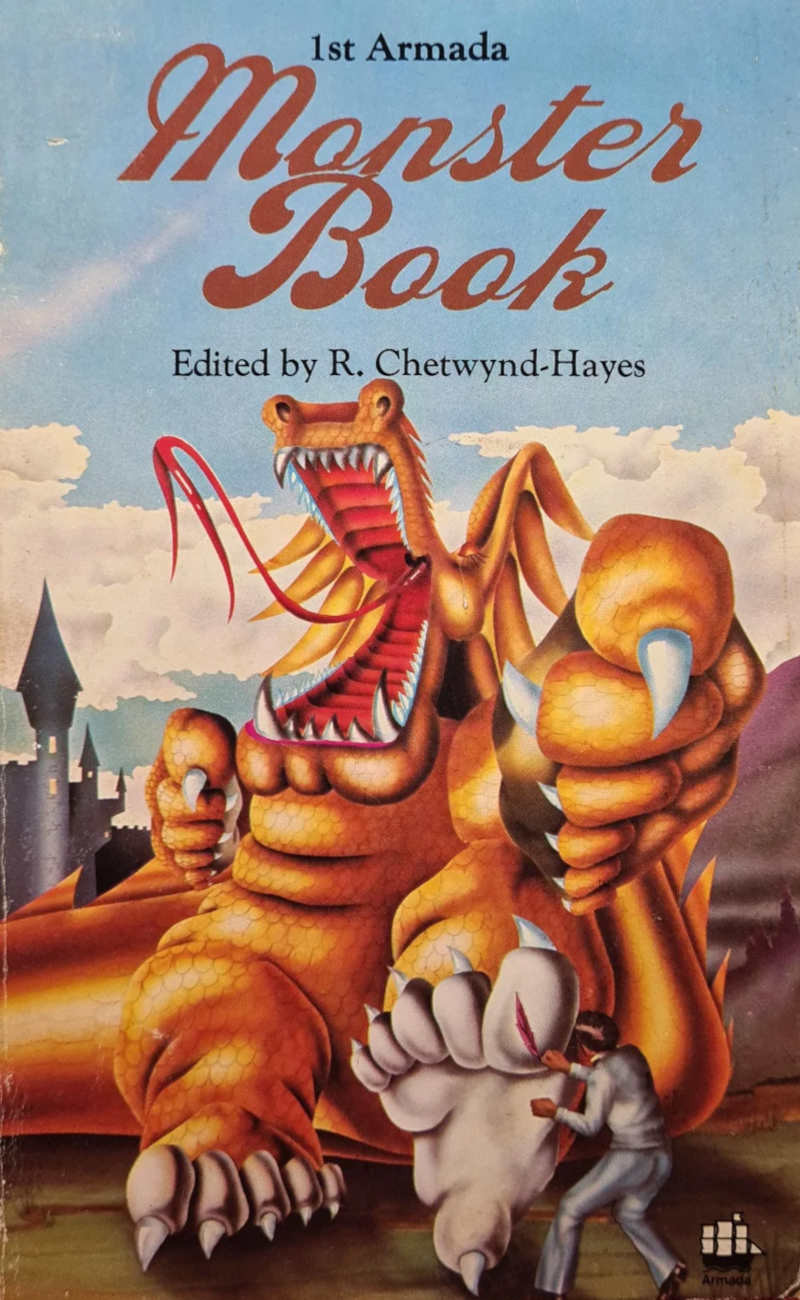
First published in 1975
CONTENTS
The Sad Vampire by R. Chetwynd-Hayes (as Angus Campbell)
The Last of the Dragons by E. Nesbit
Dimblebee’s Dinosaur by Howard Peters
A Ride to Hell by Ruth Manning-Sanders
Inside the Monster by Lucian of Samosata
The Chimaera by Nathaniel Hawthorne
The Guardian at Hell’s Mouth by Sydney J. Bounds
Something in the Cellar by Rosemary Timperley
Theseus and the Minotaur by Charles Kingsley
The Sea Serpent by Gerard James
The Thing in the Pond by Paul Ernst
Big-Feet by R. Chetwynd-Hayes
The 2nd Armada Monster Book
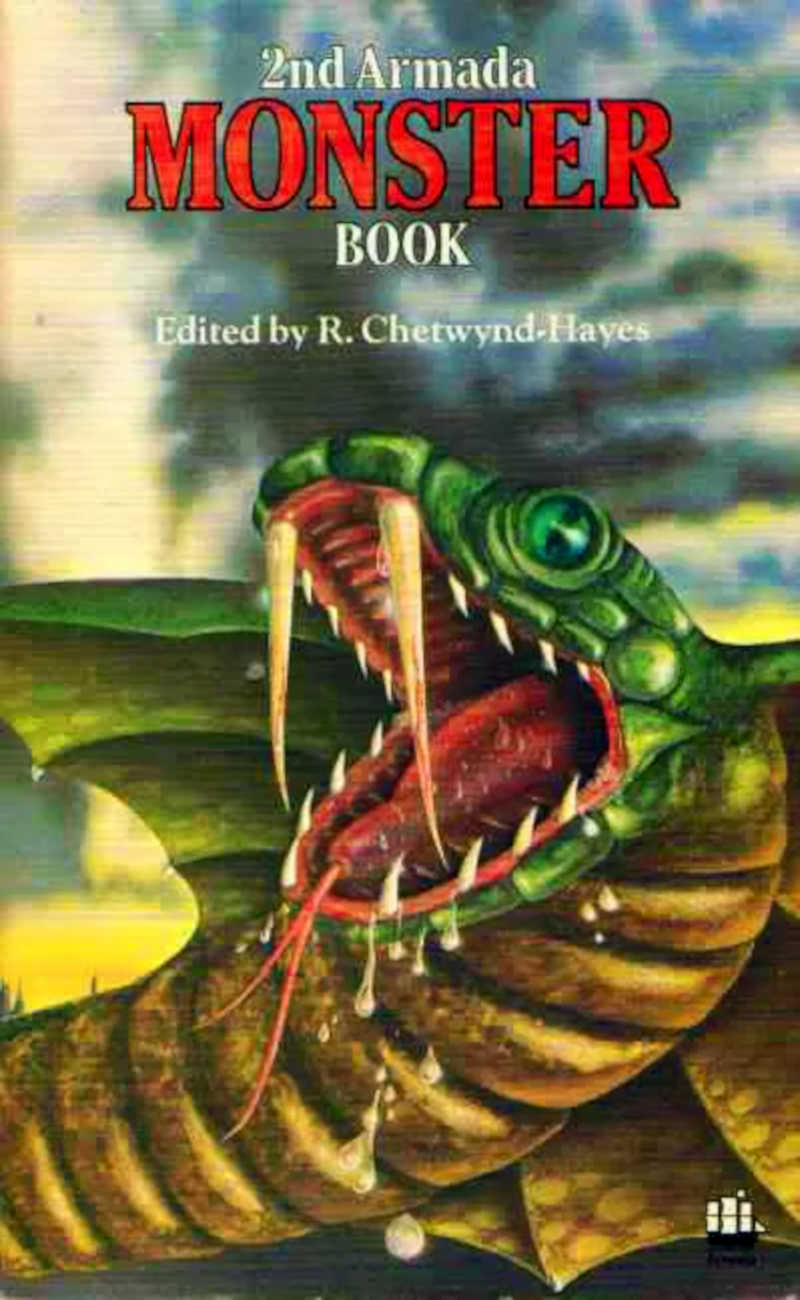
First published in 1976
CONTENTS
The Giant Who Sucked His Thumb by Adrien Stoutenburg (Adrien Stoutenbury)
The Lambton Worm by Winifred Finlay
The Prince and the Trolls by John Hampden
The Wyvern by Bernard Henderson and Stephen Jones
The Dragon Tamers by E. Nesbit
The Aliens by Catherine Gleason and Rita Morris (as Roger Malisson)
The Giant of Grabbist by Dinah Starkey
The Well at Wurrum’s End by Sydney J. Bounds
Morag and the Water Horse by Barbara Ker Wilson
The Green Thing short story by Rosemary Timperley
Homemade Monster short story by R. Chetwynd-Hayes
The 3rd Armada Monster Book
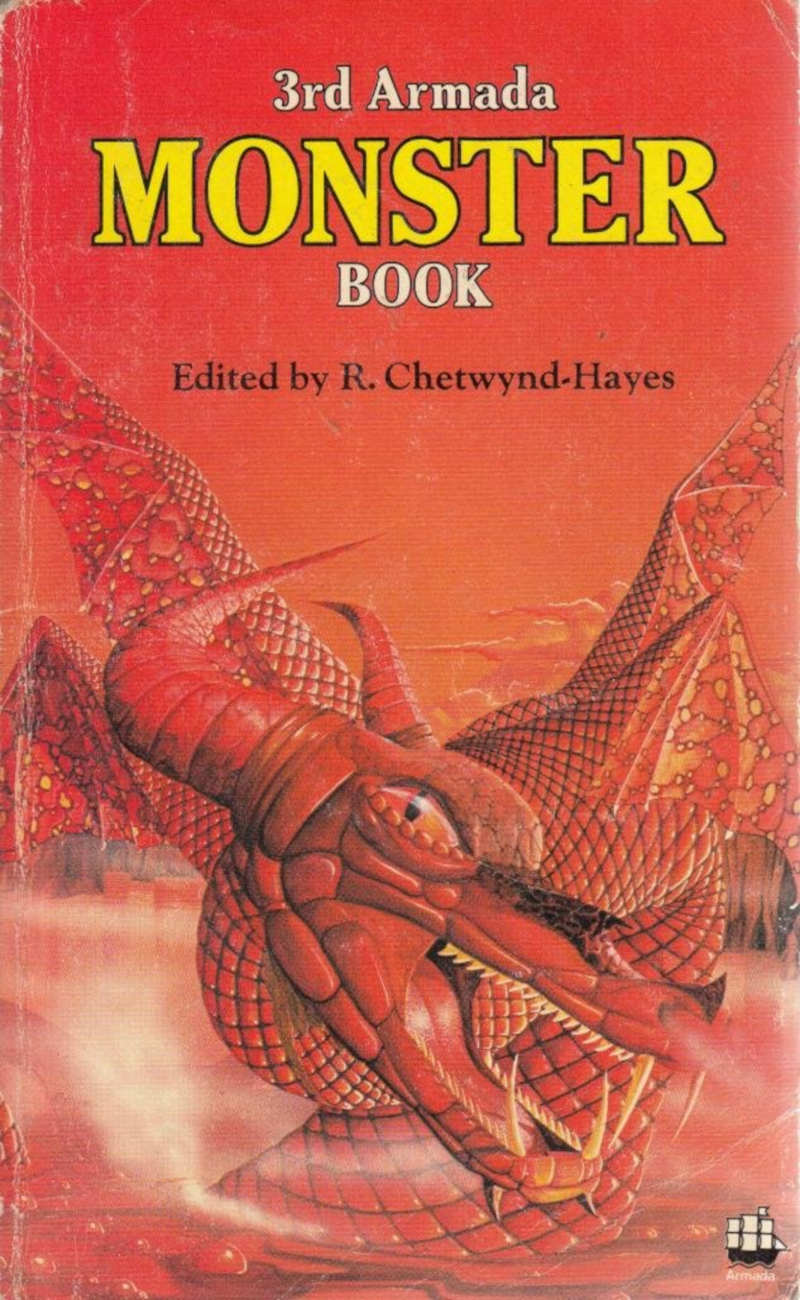
First published in 1977
CONTENTS
The Story of the Three Young Shepherds by Ruth Manning-Sanders
The Gargoyle by Catherine Gleason and Rita Morris
The Story of Giant Dumpling and How He Became a Hero by John Cunliffe
The Machine Monster by Daphne Froome
The Three Golden Apples by Nathaniel Hawthorne
The Serpent and the Cockatrice by Pamela Cleaver
Twelve Great Black Cats and the Red One by Sorche Nic Leodhas
Valley of the Monsters by Sydney J. Bounds
Victory in the Night by Rosemary Timperley
Prince Prigio and the Firedrake by Andrew Lang
The 4th Armada Monster Book
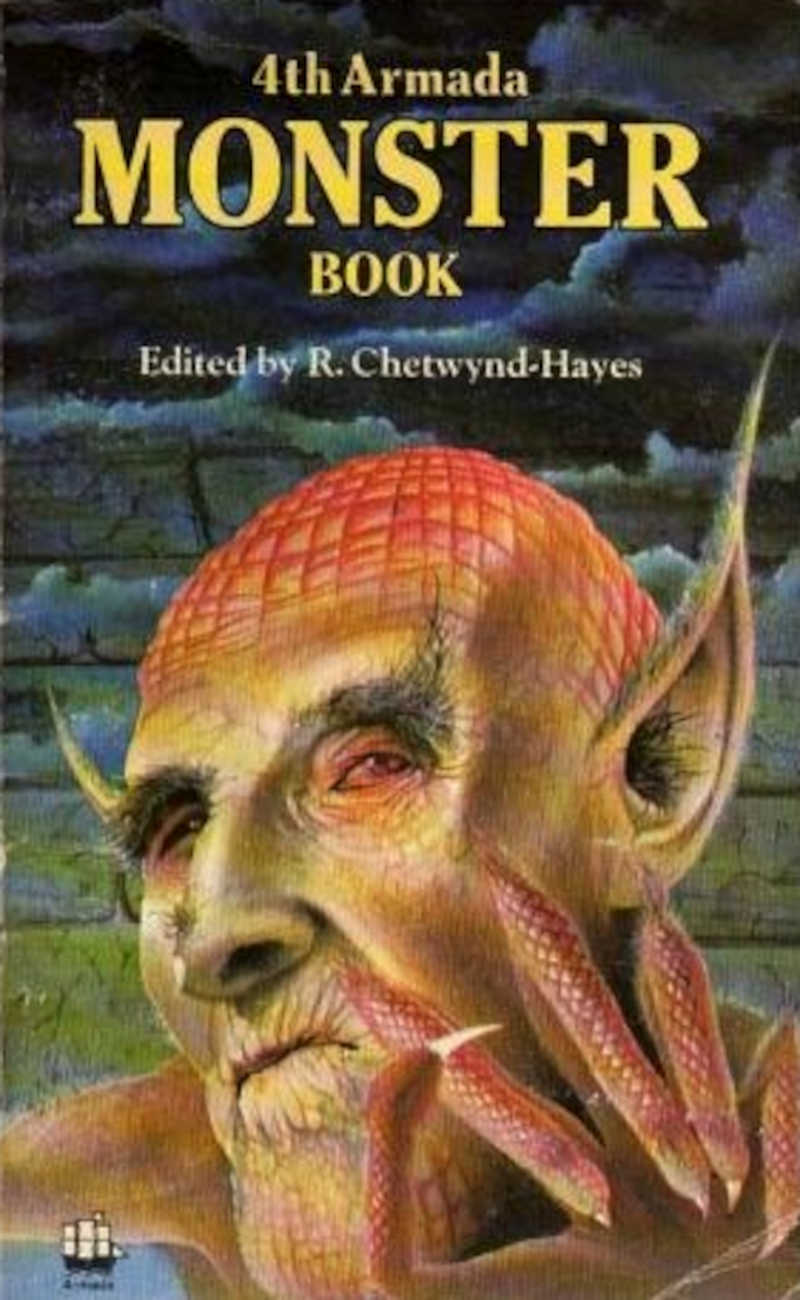
First published in 1978
CONTENTS
The Werewolf by R. Chetwynd-Hayes (as Angus Campbell)
The Bungling Bunyip by Pamela Vincent
The Four Big Trolls and Little Peter Pastureman by Cyrus Graner [1]
Movie Monster by Samantha Lee
The Miller and the Ogre by Barbara Leonie Picard
The Tardigrotifer by Daphne Froome
The Treasure Castle by Dinah Starkey
The Miser-Mon by Terry Tapp
The Hoppity-Jump by R. Chetwynd-Hayes
The 5th Armada Monster Book

First published in 1979
CONTENTS
The Tele-Mon by R. Chetwynd-Hayes
The Wind-Billie by R. Chetwynd-Hayes (as Angus Campbell)
The Water Monster by Jacynth Hope-Simpson
The Stone Monster by Guy Weiner
Satan by Sydney J. Bounds
A Touch of Sinbad by Glenn Chandler
King Arthur and the Dragon by Dinah Starkey
The Terror of Tottercombe-on-Sea by Daphne Froome
Sludge by Terry Tapp
The Giant of St. Michael’s Mount by Eileen Moloney
The 6th Armada Monster Book
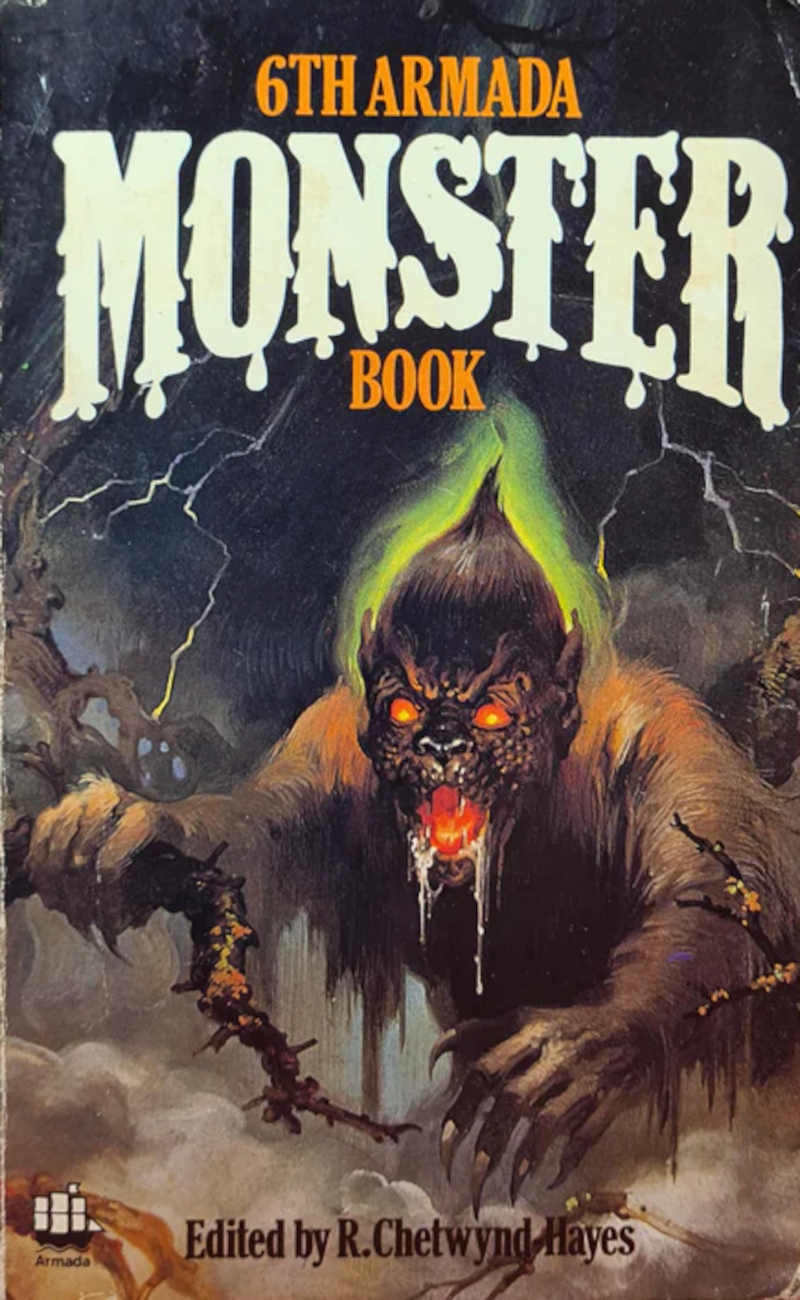
First published in 1981
CONTENTS
The Mudadora by R. Chetwynd-Hayes (as Angus Campbell)
The Slippity-Slop by Henry Glynn
Legend of the Spiders by Keith Timson
The Prince and the Dragon by Andrew Lang [2]
The Bean Rock Monster by Terry Tapp
Monster in Distress by Patricia Moynehan
Captain Castleton’s Biscuit Beetle by Daphne Froome
The Gale-Wuggle by R. Chetwynd-Hayes
_________________________
1. “The Four Big Trolls and Little Peter Pastureman” is a Swedish fairy tale. It was first published in 1909, in the Swedish folklore and fairy tale annual Bland tomtar och troll (Among Gnomes and Trolls), under the original title “Sagan om de fyra stortrollen och lille Vill-Vallareman”. It was later translated to English and published in Great Swedish Fairy Tales (1974). Other than its appearance in the 4th Armada Monster Book, the story does not seem to have been republished since.
2. The contents page of the 6th Armada Monster Book credits “The Prince and the Dragon” to Andrew Lang. However, the story in the book is a translation of a Siberian fairy tale: “Аждаја и царев син” (“The Dragon and the King’s Son”), written in 1853, by Вук Стефановић Караџић (Wuk Stephanowitsch Karadschitsch). In 1903, Lang included the translated version in his anthology The Crimson Fairy Book. His role appears to have been editorial only. His wife, Leonora Blanche Lang, translated the tale to English, so it’s unfair that Andrew Lang generally gets all the credit. He neither created the tale, nor translated it. Though, in his role of editor, he probably refined the text prior to publication.
_________________________
